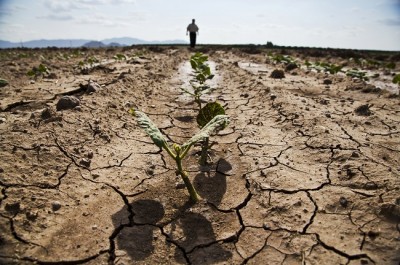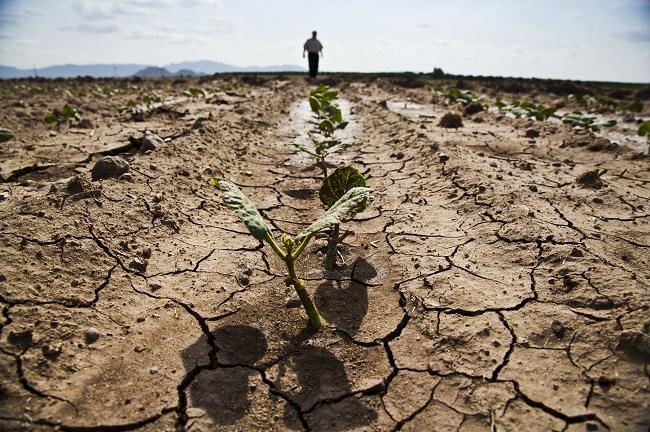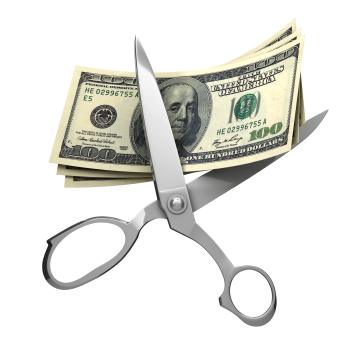
For whatever the reason and whatever the cause, weather extremes seem to be the norm more and more, and as the folks out in California can attest, a drought is always a possibility.
The infamous drought of 2012 taught us a few lessons here on the homestead in Missouri, some of them hard won. No amount of preparation can make a full- season drought a walk in the park, but there are a number of steps you can take ahead of time that will soften the blow. Whatever you do in advance, however, you may be forced to make some hard choices if the situation gets bad enough.
One of the best drought preps, strange as it may seem, is to give your rain gutters a good cleaning and put in as many rain barrels as you can get your hands on. Even in a drought, some rain will fall on rare occasions, and you want to catch, store and use as much of it as you can. In 2012, we found that our rain barrels were able to supply a lot of our animal’s water needs, freeing up well water for human and horticultural uses. We have found that the large square liquid totes in 270-330 gallon sizes make excellent rain barrels. They generally have a valve and hose attachment preinstalled, and can even be found in food grade materials. If you can swing it, have one at every corner of every building; we even have a 60-gallon barrel on our chicken coop!
One of the items on our wish list is a large, 1000-plus gallon storage tank in our water system. As the last drought wore on, we found that our well was increasingly less able to keep up with the pump. We could water and irrigate for about 15 minutes at a time and then had to allow the well to recover for a couple of hours. With a storage tank, we could have done a good watering every other day and refilled the tank, which would have been far more effective.
The next lesson learned was the value of mulch. Of all the things we use on the homestead, mulch probably constitutes our biggest single allotment of time and effort. In preparation for winter, everything gets heavily mulched, and in preparation for drought the same is true. Mulch is a wonderful thing; it insulates from cold and nothing holds in moisture better. Even row crops can benefit from a good mulching, once the plants are far enough out of the ground. Fruit trees, berry bushes, and ornamentals will also benefit greatly from a thick bed of mulch when water becomes harder to come by.
The next must-have item in a drought is lots of buckets. Towards the end of the last drought, we weren’t sending much of anything down the drain. We bucketed bath water out of the tubs to water plants, same for dish water. For most of our mopping we use vinegar, so the mop bucket was dumped in the vicinity of our blueberry bushes and other acidic soil-loving plants. When things get tough, nothing can be left to waste, and if things get bad enough bringing buckets of water from a nearby pond or lake for household use may become a necessity. You can never have too many buckets.
Maybe the biggest lesson learned is that in a drought, animal feed becomes scarce and expensive. If it looks like it could be a bad year, get as much of your hay and feed as you can as early as you can. I watched friends and neighbors struggle to keep cattle fed in 2012, many having to give up the fight and sell or butcher cattle before their time. Some neighbors still haven’t recovered from this. If you live in an area that generally has a second cutting of hay, don’t wait for the second cutting if thing start looking dry, as there may not be one. Same for grain-based feeds; prices will soar when crops start to fail so lay it in early if you can. I was very happy to have goats instead of cows in 2012; goats do fine on dead weeds!
When planning your gardens in a potential drought year, choose drought-hardy varieties if available. Lay things out in zones, not just for watering efficiency, but for what you will let go first if irrigation becomes an issue. As I said earlier, a prolonged drought may force tough choices, and it is never easy to let part of your garden plot go to save the rest. Be sure to have a small “Core Garden” with enough diversity to supply some of your produce needs but of a size that you will be able to keep it properly watered in any but the direst of circumstances.
If you have the means and an appropriate location, a back-up well is an excellent idea. This is another one of my wish-list items. I would like another well, with a large storage tank and a solar powered pump at the highest point on my property. This would be a huge benefit for both drought and grid-down scenarios. If being prepared were cheap and easy, we’d all already be there!
Droughts are a very tough deal, especially for the homesteader. Nothing done in advance can totally mitigate the effects, but with a bit of planning and prepositioning, the blow can certainly be softened to a tolerable level.
Do you have any tips on surviving a drought? Tell us in the comments section below.
Sign up for Off The Grid News’ weekly email and stay informed about the issues important to you











